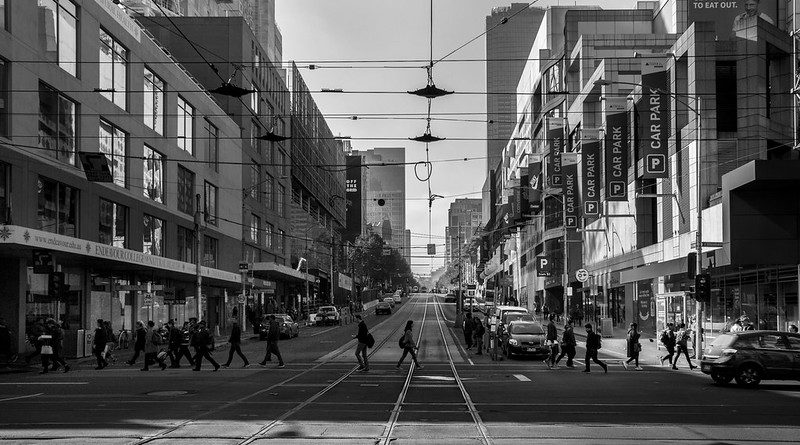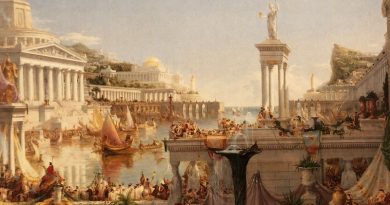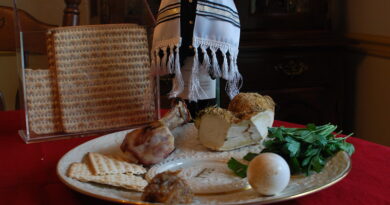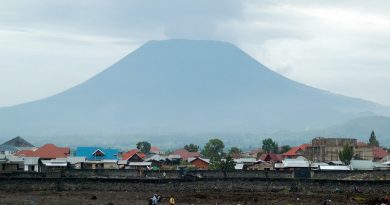Global Cities: Melbourne
No Australian city better personifies the country’s multiculturalism than Melbourne, one of the most diverse melting pots on the planet. The city is one of the most ethnically and culturally diverse cities on the planet, with large immigrant populations from all corners of the world, notably having the largest Greek population in the world outside of Athens. The Greek population of the city is an essential aspect of the city’s cultural identity and one of the largest and best-known diaspora communities in the country.
Greeks
Melbourne’s Greek community is the city’s most notable foreign diaspora population in a number of different ways. The Greek-born population numbers at just under 50,000 and is the largest Greek-speaking population outside of Greece. The Greek population of the city is an essential aspect of the city’s cultural identity and one of the largest and best-known diaspora communities in the country. It is one of the city’s oldest and most successful immigration stories.
History
Greek presence in Melbourne began in earnest during the Gold Rush, as is the case with most of the city’s diaspora populations. According to urban legend however, the first Greeks to arrive were a group of seven sailors imprisoned for piracy and dispatched to the new British colony of Australia at the beginning of the 19th Century.
The Greek population arrived in large numbers during the Gold Rush in the late 19th Century, which lured people from all over the world to the fertile state of Victoria. The population was initially comprised of short-term settlers and thus heavily skewed male. There were only 19 Greek women in 1871 in comparison to 127 men. As the age of the Gold Rush came to an end towards the end of the 19th Century, many members of the Greek community decided to remain in Australia, and the community slowly grew. Indeed, according to a census in 1901, there were 878 Greek-born persons in Australia. A number of Greek restaurants and businesses were set up, the first Greek-language newspaper being issued in 1913, indicative of the community’s growing size.
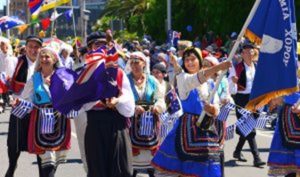
Despite this growth, the Australian government began a major crackdown on non-British immigration from 1920, issuing strict quotas on immigrant populations entering the country. The Greek population was limited to 100 per year, which halted the community’s growth. The population remained fairly static as a result until a major turning point occurred in the wake of the Second World War. Spinning out of the global conflict, a civil war erupted in Greece, which caused significant population displacement. It is believed that over 160,000 Greeks settled in Australia during this period, over half of which making their homes in Melbourne and its surrounding suburbs.
This population explosion saw the pre-established Greek community significantly expand and a wealth of new restaurants and businesses set up. Greek culture became increasingly palatable within Melbourne and an increasingly focal point of the city’s multicultural identity. Greek immigration rates generally declined thereafter, although there have been small spikes during periods of unrest such as following the Turkish Invasion of Cyprus in 1974 and the economic crisis of the early 2010’s. The community very much remains intact and is widely dispersed throughout the city. Major population hubs include Port Melbourne, Oakleigh, Doncaster, Preston and Coburg. Economically, the Greek population is highly active in fields such as hospitality and manufacturing.
The Greek-born population of Melbourne is estimated at 49,000 while over 400,000 Australians claim some kind of Greek heritage, an indication of the sheer scale of the population’s presence in the city. Relations between Australia and Greece remain strong, as indicated by Melbourne and Greece’s second largest city Thessaloniki becoming sister cities in 2004 in a symbolic gesture of cultural closeness.
Top Five Restaurants
- Stalactites
Address: 177/183 Lonsdale Street, Melbourne, VIC 3000, Australia
Opening Hours: 24/7
One of Melbourne’s oldest Greek restaurants, Stalactites has been in operation since 1978 in the heart of the Greek. It is open 24 hours a day, seven days a week and is home to some of the finest Greek food in the city.
- Hellas Cakes
Address: 322 Lennox Street, Richmond, VIC 3121, Australia
Opening Hours: 6.30am-5pm (Monday-Friday), 7am-5pm (Saturday), 7.30am-4pm (Sunday)
Greek cuisine is known for, amongst many other things, its top-quality desserts. This is the pbest place in Melbourne to get your hands on the country’s sweeter culinary delights. Established in 1962 by first generation Greek immigrant and pastry chef Iraklis Kenos, its enduring success is a testament to that of Melbourne’s Greek community.
- Jim’s Greek Tavern
Address: 32 Johnston Street, Collingwood, VIC 3066, Australia
Opening Hours: 6pm-12am
A long-standing neighbourhood restaurant specialising in classic Greek staples such as souvlaki against a taverna backdrop.
- Elyros Restaurant & Wine Bar
Address: 871 Burke Road, Camberwell, VIC 3124, Australia
Opening Hours: 12pm-10pm (Wednesday-Thursday), 12pm-11pm (Friday-Saturday), 12pm-3pm (Sunday)
On the more high-end of the spectrum is Elyros, a much-loved Camberwell restaurant, focusing on Cretan specialities amid a slick, modern decor.
- Hellenic Republic Kew
Address: 28 Cotham Road, Kew, VIC 3101, Australia
Opening Hours: 12pm-4pm, 5.30pm-9.30pm (Monday-Thursday, Sunday), 12pm-4pm, 5.30pm-10pm (Friday-Saturday)
Flagship branch of a small chain of upscale Greek restaurants headed by celebrated chef George Calombaris.
Things to Do
- The Greek Centre for Contemporary Culture
Address: 168 Lonsdale Street, Melbourne VIC 3000, Australia
Opening Hours: N/A
One of the most important Greek cultural institutions in the city, it features a number of educational programs as well as a Greek bar and restaurant-Melina on the Rooftop.
- Hellenic Museum
Address: 280 William Street, Melbourne, Australia
Opening Hours: N/A
In the iconic former Royal Mint building, the Hellenic Museum features a permanent collection of Greek artworks and artefacts in addition to a rotating series of exhibitions focusing on the region’s rich and diverse cultural history, drawing from fields such as visual arts, cinema, architecture and music.
- Antipodes Festival
Address: N/A
Opening Hours: N/A
One of the Greek community’s most significant cultural events, the Antipodes Festival has been held in Lonsdale Street for over 30 years, celebrating all aspects of Greek culture, with particular emphasis on food, featuring over 60 stalls.
- Greek Film Festival
Address: N/A
Opening Hours: N/A
A relatively recent cultural fixture, Melbourne’s Greek Film Festival is an annual celebration of new and old works of Greek cinema.
- Caras the Greek Shop
Address: 189 Lonsdale Street, Melbourne, VIC 3000, Australia
Opening Hours: N/A
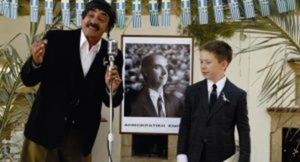
A Greek institution in Melbourne, this place may seem like a tourist trap, but it is one of the best places in town to procure works of popular Greek music and other forms of culture. It is one of the city’s most authentic purveyors of Greek goods.
Little Italy
Italians represent one of Melbourne’s largest diaspora populations. Australia is home to 185,4000 Italian-born residents, 37% (or 69,000) of which live in Melbourne. Melbourne proper is home to 69,000 Italian-born citizens while 279,000 claim Italian ancestry, over 30% of the city’s total population. Melbourne’s Italian population has a long and extensive history stretching back to the gold rush period and remains a focal point of the city’s multicultural identity.
History
Italian immigration to Melbourne and Australia began in the mid 19th Century. The Victorian Gold Rush was a major draw for immigrants from all corners of the world, Italians being no exception to this. Additionally, a large number of Italian and Swiss Italian labourers were recruited in order to fill a number of gaps left by workers pre-occupied with the Gold Rush. Melbourne and the state of Victoria, were very much the early hubs of the Italian community. As the Gold Rush drew to a close, many left for other, more lucrative parts of the country, but a large number of Italians remained to set up more long-term businesses. As the 20th Century approached, the Italian community of Victoria grew increasingly in size and sophistication. The Dante Alighieri Society, an Italian cultural organisation was established in 1896, an indication of the growing community.
As economic distress took hold in Italy at the beginning of the 20th Century, more and more Italians fled abroad, with increasing numbers settling in Melbourne and elsewhere in Australia due to the pre-existing communities and the abundant economic opportunities. Melbourne’s Italian community in particular achieved considerable success in a number of different fields. In addition to the industries of manufacturing and agriculture, Italian Melbournians also branched out into areas such as retail, craftsmanship and medicine. Most notably, Italian engineers Carlo Catani and Ettore Checchi oversaw the city’s revolutionary irrigation system. This gradual population increase was halted by the introduction of strict immigration quotas in 1925 and the Italian population of Melbourne, and Australia in general, remained fairly stagnant for a number of years.
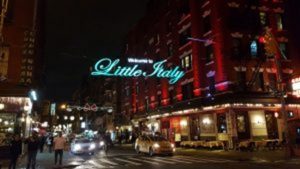 The aftermath of the Second World War was a major turning point in the history of Italian immigration to Australia and saw a significant spike in new settlers. The immigration quota system was significantly relaxed and as a result a huge influx of Italian immigrants arrived in the country, the majority settling in Melbourne. The majority of the new arrivals hailed from the agricultural regions of Sicily and Calabria and slotted seamlessly into Victoria’s agricultural industry. For the next few decades, Italian immigration steadily increased, peaking in the early 1970’s as the state’s Italian-born population totalled 121,000.
The aftermath of the Second World War was a major turning point in the history of Italian immigration to Australia and saw a significant spike in new settlers. The immigration quota system was significantly relaxed and as a result a huge influx of Italian immigrants arrived in the country, the majority settling in Melbourne. The majority of the new arrivals hailed from the agricultural regions of Sicily and Calabria and slotted seamlessly into Victoria’s agricultural industry. For the next few decades, Italian immigration steadily increased, peaking in the early 1970’s as the state’s Italian-born population totalled 121,000.
Over the past few decades, the Italian population has stabilised in Melbourne but remains one of the largest immigrant populations and a key part of the city. Melbourne’s Italian population is mainly centred in inner-city suburbs such as Brunswick and Carlton. The city boasts its own ‘Little Italy’ neighbourhood on Carlton’s Lygon Street. It is known for its wealth of Italian restaurants and businesses. Now a sister city to Milan, an indicator of the strong cultural ties between the two countries, Melbourne is one of the most significant Italian foreign hubs in the world.
Top Five Restaurants
- Pellegrini’s Espresso Bar
Address: 66 Bourke Street, Melbourne VIC 3000, Australia
Opening Hours: 8am-11.30pm (Monday-Saturday), 12pm-8pm *Sunday)
Open since 1954, Pellegrini’s Espresso Bar is emblematic of the success of. Melbourne’s Italian community. Established by two immigrant brothers, the coffee shop is one of the city’s most enduring institutions, featuring some of the finest coffee (no small feat) in the city and a rotating daily menu of Italian classics.
- Osteria Ilaria
Address: 367 Little Bourke Street, Melbourne VIC 3000, Australia
Opening Hours: 11.30am-10.30pm (Monday-Saturday)
One of the city’s best, modern Italian eateries known for its top-quality disease and cocktails.
- Arlechin
Address: Mornane Place, Melbourne VIC 3000, Australia
Opening Hours: 5pm-3am (Tuesday-Saturday)
In one of Melbourne’s many laneways is Arlechin, an Italian bar and restaurant open well into the late hours of the night serving some of the city’s finest pasta and wine.
- Pasta Adagio
Address: 486 Bridge Road, Richmond VIC 3121, Australia
Opening Hours: 6.30pm-10.30pm (Tuesday-Saturday)
A neighbourhood restaurant with seasonal Italian dishes and a strong emphasis on organic ingredients.
- Toto’s Pizza House
Address: 101 Lygon Street, Carlton VIC 3053, Australia
Opening Hours: 12pm-10pm (Monday-Thursday, Sunday), 12pm-11pm (Friday-Saturday)
An iconic staple of Lygon Street’s ‘Little Italy’, Toto’s has been open since 1961 and is considered to be the country’s most influential pizza restaurant. Now with multiple locations, the original Lygon Street remains a vital Italian-Australian cultural institution.
Five Things to Do
- Museo Italiano
Address: 199 Faraday Street, Carlton VIC 3053, Australia
Opening Hours: 9am-8.45pm (Tuesday), 9am-5pm (Wednesday-Friday)
The city’s premier Italian cultural institution, the Museo Italiano retells the story of Italian migration to Australia. A unique and informative cultural experience.
- Farm Vigano
Address: 10 Bushmans Way, South Morang VIC 3752, Australia
Opening Hours: 11am-5pm (Wednesday), 11am-11pm (Thursday-Sunday)
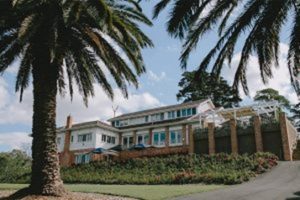
A short drive from the Melbourne city centre, this former private estate has been Italian-owned for decades. It is now a top-tier Italian restaurant and event venue available for private hire. It boasts some of the best Italian cuisine in the state against a naturally beautiful pastoral backdrop.
- Franco Cozzo
Address: 54-58 Hopkins Street, Footscray VIC 3011, Australia
Opening Hours: 10am-4pm (Monday-Friday), 10am-2pm (Saturday)
A Melbourne institution, this Baroque furniture store was started by the eponymous Franco Cozzo, a Sicilian migrant who was known for popularising multiculturalism in Melbourne with his iconic commercials and products.
- Italian Cultural Week
Address: N/A
Opening Hours: N/A
A recent addition to Melbourne’s cultural calendar, Italian Cultural Week aims to unite the city’s Italian community across a range of cultural events.
- Italian Wine and Food Festival
Address: N/A
Opening Hours: N/A
Fewer Italian exports are more popular than the country’s cuisine. Held in both Melbourne and Sydney, this annual event hosts a number of celebrated chefs and restaurants, including talks, food stands and classes such as pasta making.
Indian
Melbourne is home to the country’s largest Indian population. It is believed that the Indian community encompasses 3% of the city’s total population and has increased significantly since the beginning of the millennium. Despite this, the Indian diaspora has a long history in Melbourne and are counted as being amongst the earliest immigrant populations in the city, and the country.
History
Indian immigration to Australia can be traced back to the early days of British colonialism. Due to the pre-existing colonial ties between Britain and India, a small number of the initial convicts were Indian or of Indian descent. As the British consolidated their territorial grip on the continent, a number of the labourers were Indian. These initial settlers, often arriving by coercion, were small in number and did not contribute to a community of any major significance.
As the 19th Century progressed and Australia became an increasingly enticing economic opportunity, a larger number of Indian labourers voluntarily travelled to the continent to make their fortunes. Due to India’s colonial ties to Britain, they were able to assimilate more easily than other Asian populations such as the Chinese, who were met with open hostility. By the beginning of the 20th Century, the Indian population of the state of Victoria had grown to nearly 2,000.
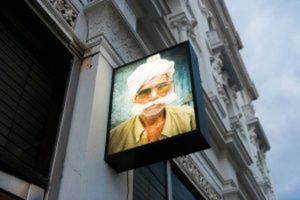
This nascent growth was halted, as was the case of any other non-white immigration, with the introduction of the White Australia policy in 1901. For many decades, the Indian population remained fairly stagnant as a result.
It was not until the aftermath of India’s independence from the United Kingdom in 1947 that immigration increased to a significant degree. This, in combination with a relaxation of immigration laws, saw a large number of Indians and Anglo-Indians settle in Australia, particularly around the Victoria region. By 1954, the Indian-born population had doubled to over 3,000.
The following decades saw the gradual dissolution of Australian immigration laws. Furthermore, a wide range of Indians arrived from a number of different backgrounds. Rather than the initial immigrants who mainly encompassed labourers, teachers and doctors began to arrive. The early 1970’s saw a sharp increase in Indian immigration as the ‘White Australia’ policy was finally dismantled entirely. The rate of immigration gradually increased throughout the remainder of the 20th Century. A recent poll in 2011 estimated that over 111,000 Victorians were born in India, which is in addition to those of Indian descent.
The Indian population of Melbourne and the surrounding state of Victoria is known for its cultural and religious diversity. 36% is Hindu, 36% is Christian and 28% is Sikh. Muslim and Buddhist populations are very small. The large Christian population is owed to the large number of early Ango-Indian settlers. The population is well represented through a variety of different industries and across all aspects of social stratification. Geographically, the population is widely dispersed across the city and the state, with major hubs being in the South-Eastern suburbs if Clayton, Mount Waverley and Glen Waverley.
Top Five Restaurants
- Curry Vault
Address: 18-20 Bank Place, Melbourne VIC 3000, Australia
Opening Hours: 12pm-3pm, 5pm-10pm (Monday-Friday), 5pm-10pm (Saturday)
A popular CBD restaurant known for its low-frills decor, friendly atmosphere and top-notch takes on classic dishes such as masala and madras.
- Babu Ji
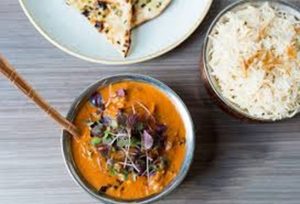
Address: 4-6 Grey Street, St. Kilda VIC 3182, Australia
Opening Hours: 5.30pm-9.30pm (Monday-Friday), 11.3o0am-2.30pm, 5.30pm-9.30pm (Saturday-Sunday)
A contemporary Indian restaurant specialising in street food and cocktails.
- Desi Dhaba
Address: 134 Flinders Street, Melbourne VIC 3000, Australia
Opening Hours: 11am-2am (Monday-Friday), 12pm-2am (Saturday-Sunday)
One of the city’s most unique and kitsch Indian restaurants. Classic dishes against a colourful backdrop featuring Bollywood films and dancing.
- Kake Di Hatti
Address: 128 Lygon Street, Brunswick East VIC 3057, Australia
Opening Hours: 5pm-10.30pm (Monday, Wednesday-Friday), 1pm-10.30pm (Saturday), 1pm-10pm (Sunday)
Friendly and stripped-down family-run neighbourhood Indian restaurant in Brunswick, specialising in Northern Indian food.
- Cafe Southall
Address: 124 Carlisle Street, St. Kilda VIC 3182, Australia
Opening Hours: 5.30pm-10pm (Tuesday-Saturday), 5.30pm-9pm (Sunday)
A bold new Indian restaurant started by Ravnish Gandhi, the son of the owners of ‘Bombay by Night’, one of the city’s finest Indian icons. A slick modern restaurant which combines classic dishes with a newer sensibility.
Things to Do
- Museum India
Address: 61-63 Foster Street, Little India, Danddenong, VIC 3175, Australia
Opening Hours: 11am-4pm (Tuesday-Friday)
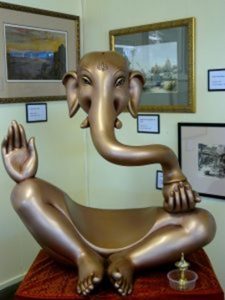
Recently opened in the Indian precinct of Dandendong, this small yet informative museum retells the story of Indian migration to Australia and celebrates the country’s cultural heritage. The museum features a wealth of artworks and artefacts from as early as 400 BC.
- Indian Film Festival
Address: N/A
Opening Hours: N/A
Established in 2012 with founding from Film Victoria, the Indian Film Festival of Melbourne celebrates Bollywood’s rich cinematic heritage with an array of screenings.
- Indian Festival Melbourne
Address: Queen Victoria Market
Opening Hours: N/A
Melbourne’s iconic market is transformed into a replica of New Delhi’s iconic Chain Chowk and features a wealth of food stalls and other cultural activities including dancing performances and cooking classes.
- Shri Shiva Vishnu Temple
Address: 52 Boundary Road, Carrum Downs VIC 3201, Australia
Opening Hours: N/A
Probably the state’s most spectacular Hindu temple, the Shri Shiva Vishnu temple is a true sight to behold and a foundational element of the state’s Hindu population.
- Diwali
Address: N/A
Opening Hours: N/A
Perhaps the most well-known of India’s many religious festivals, the Hindu Festival of Lights is widely celebrated throughout the state of Victoria due to the large Indian population. Major celebrations include those at the city’s iconic Federation Square.
Chinatown
Melbourne is home to one of the oldest Chinese diasporas in the world. The city’s Chinese population is the oldest in the country and the most culturally significant in a number of reasons. From its introduction to the now-ubiquitous cuisine throughout the country to its enabling for other Asian populations to assimilate into the country, Melbourne’s Chinese population is one of the richest and most significant diaspora stories in Australian history.
History
Chinese immigration to Melbourne began with the outbreak of the Victoria Gold Rush in the mid-19th Century. A large number of Chinese prospectors arrived in Victoria, enticed by the prospect of making a fortune, before returning home to their families. The community grew rapidly, encompassing 7% of Victoria’s population by 1861.
The highly visible Chinese population was mainly clustered around urban areas, with Little Bourke Street in Melbourne becoming a nascent ‘Chinatown’. The neighbourhood became filled with boarding houses and more salacious locales such as opium dens and brothels to accommodate the male-dominant population.
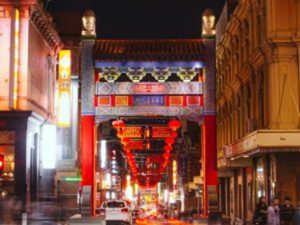
‘Chinatown’ grew significantly over the latter half of the 20th Century as the population continued to grow. By 1859, the state’s population numbered at 45,000. As the Gold Rush subsided, a large number of Chinese immigrants settled rather than return home. Many transitioned into industries such as agriculture, hospitality and craftsmanship. A large number of Chinese-owned businesses were set up during this period such as restaurants and shops specialising in goods such as furniture. Grocery stores became especially associated with the nascent Chinese population. Community services such as Chinese-language newspapers were soon established in the city to accommodate the increasingly significant population. Major cultural and religious holidays such as Chinese New Year became widely celebrated throughout the state.
The ascendant Chinese population was brought to a halt at the beginning of the 20th Century. Racially motivated government policies had been implemented since the beginning of Chinese immigration and gained traction with the 1901 Immigration Act or the ‘White Australia’ policy. This imposed significant quotas on non-European immigration and the Chinese population were particularly singled out for prejudice, which caused significant tensions within Melbourne.
Despite these tensions, ‘Chinatown’ remained a vital hub for the Chinese population in Melbourne and community activism emerged to protest their unfair treatment. While the population remained fairly stagnant until the mid-20th Century, its cultural impact became increasingly palpable. Chinese cuisine became increasingly popular as students began to frequent Chinatown eateries in the 1930’s. The first notable example of Chinese-Australian cuisine was born in the 1940’s as the ‘Dim Sim’ was created.
The population began to increase again in the second half of the 20th Century as the racially-motivated immigration policies were progressively dismantled. Trade links between Australia and China facilitated further immigration in the 1970’s but it was not until the early 1990’s when another population explosion occurred. In the wake of the political unrest in China, which reached a flashpoint with the Tienanmen Square protests, the population in Victoria more than doubled.
Despite a history rife with mistreatment and prejudice, the Chinese community remains a vital aspect of Melbourne’s cultural fabric. As one of the city’s oldest immigrant populations, they have left a hugely significant cultural contribution to the city as well as the country. Melbourne’s Chinese population was instrumental in the country’s gradual acceptance and embracing of its culture while also enabling other Asian populations to assimilate. In modern days, the Chinese population is widely dispersed throughout the state of Victoria, although Chinatown, the oldest of its kind in the country (and the longest-continuously-surviving in the Western world), remains a focal population hub. Other major hotspots include Glen Waverley and Box Hill.
Top Five Restaurants
- Mr Meng Chongqing Gourmet
Address: 382-384 Elizabeth Street, Melbourne VIC 3000, Australia
Opening Hours: 12pm-10pm
A highly-popular Sichuan restaurant run by the eponymous celebrity chef ‘Mr Meng’.
- Camy Shanghai
Address: 23 Tattersalls Lane, Melbourne VIC 3000, Australia
Opening Hours: 11.30am-3.30pm, 5pm-9.30pm (Monday), 11.30am-3.30pm, 5pm-10pm (Tuesday-Friday), 12pm-3.30pm, 5pm-10pm (Saturday), 12pm-3.30pm, 5pm-9.30pm (Sunday)
An iconic ‘Chinatown’ staple, Camy Shanghai is no-frills and well-known for its bargain prices for a wide selection of noodle and dumpling dishes.
- ShanDong MaMA
Address: Mid City, 7/200 Bourke Street, Melbourne VIC 3000, Australia
Opening Hours: 11am-9.30pm
A popular Chinese restaurant in the historic Chinatown known for its homemade dumplings.
- HuTong
Address: 14-16 Market Lane, Melbourne VIC 3000, Australia
Opening Hours: 11.30am-3pm, 5.30pm-10.30pm (Monday-Thursday, Sunday), 11.30am-3pm, 5.30pm-11pm (Friday-Saturday)
Family-run Chinese restaurant in Chinatown specialising in traditional classics including dumplings.
- Supper Inn
Address: 15 Celestial Avenue, Melbourne VIC 3000, Australia
Opening Hours: 5.30pm-2.30am
A busy Chinese restaurant open late into the night specialising mainly in seafood dishes as as well as sharing plates.
Things to Do
- Chinese Museum
Address: 22 Cohen Place, Melbourne VIC 3000, Australia
Opening Hours: 10am-4pm
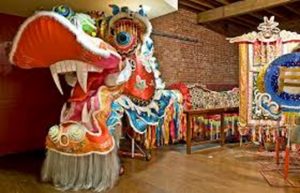
Established in 1985, the Chinese Museum is one of the most important cultural institutions in the city. A highly informative experience, the museum features a series of permanent exhibitions and installations, which relate the rich and sometimes harrowing history of the Chinese experience in Australia and the cultural interactions between the two countries.
- Yun Yang Temple
Address: 6-10 Reservoir Road, Narre Warren North VIC 3804, Australia
Opening Hours: 8.30am-4pm (Sunday)
A short drive from the Melbourne city centre, this is one of Australia’s most important and beautiful Buddhist temples.
- Fo Guang Shan Melbourne
Address: 89 Somerville Road, Yarraville, VIC 3013
Opening Hours: 9am-5pm (Tuesday-Sunday)
A temple complex and Chinese school dedicated to promoting the country’s rich cultural and historical traditions.
- Mahjong
Address: N/A
Opening Hours: N/A
A popular Chinese card game, Mahojong is highly popular amongst Melbourne’s Chinese community and there are a large number of meet-up games throughout the city.
- Chinese New Year
Address: N/A
Opening Hours: N/A
China’s largest cultural and religious festival is widely celebrated in Melbourne. There are a wide array of events to celebrate throughout the city, with markets, lantern festivals and fireworks displays popping up everywhere.
Sri Lanka
Sri Lankan Australians are a sizeable ethnic minority in Australia, with 110,000 people of Sri Lankan ancestry currently living there. The population is heavily centred in the state of Victoria, which is home to nearly 56,000 Sri Lankans, over half of the country’s total population. The community is culturally diverse, speaking a wide range of different languages. The population is heavily based around Southeastern suburbs such as Dandenong and Glen Waverley.
History
The Sri Lankan population of Australia can be traced back to as early as the beginning of the 19th Century. Due to the country’s colonial ties to Britain, a number of Sri Lankans were able to travel to Australia to pursue economic opportunities. The first recorded Sri Lankan settlers were Major William O’Dean and his Sinhalese wife. Immigration was relatively small throughout the 19th Century, especially when compared to the numbers of Indian and Chinese settlers. However, many did travel to pursue the opportunities presented by the Victorian Gold Rush.
The country’s Sri Lankan population reached over 600 by the beginning of the 20th Century and remained stagnant until the Second World War due to the implementation of the White Australia policy. 133 of these were based in Victoria, the majority of which being Burghers-mixed-race descendants of white colonists. The community was relatively small and did not grow into one of significance until the aftermath of the Second World War. This was motivated by a number of different factors.
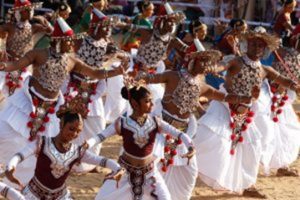
Sri Lanka declared its independence from Britain in 1948 which freed up the mobility of its citizens. Many Berghers fled Sri Lanka for other English speaking territories including the United Kingdom and Australia. Furthermore, there was a progressive relaxation of immigration laws. By 1966, the Sri Lankan population in Victoria alone had exceeded 3,000, a considerable increase. The dissolution of the White Australia laws proved to be a significant turning point and saw large numbers of Tamil and Sinhalese settlers arrive in addition to Berghers. Over the course of a decade, the Victorian population had tripled to over 9,000.
The late 20th Century saw additional increases of the Sri Lankan population in Victoria and elsewhere in Australia. This was prompted both by the pre-existing population’s natural growth as well as a result of external factors. Most notably was the outbreak of the Sri Lankan Civl War in 1983, which raged for over 25 years until 2009. This has caused significant population displacement and a number of Sri Lankans of Tamil and Sinhalese background to relocate to Melbourne and other regions of Australia.
In modern times, the Sri Lankan community is amongst Melbourne and Victoria’s largest immigrant populations. Scattered widely throughout the city and its surrounding suburbs, it is mainly centred in the Southeast. It is highly diverse but over half are Sinhalese while Tamils also represent a sizeable minority. It is also known for its religious variety, being 42% Buddhist, 40% Christian and 12% Hindu.
Top Five Restaurants
Sri Lankan cuisine is a unique melting pot of influences. It bears a number of similarities to other South Asian influences, as evidenced by its plethora of rice and curry dishes. It also exhibits influences from Dutch and Indonesian styles while seafood factors heavily into its culinary identituy. Major dishes include ‘Kottu’, a distinct stir fry dish which uses shredded roti bread as a substitute for rice. Hoppers are another popular dish, a fermented batter pancake. Melbourne, with its large Sri Lankan communtiy, is one of the best places in the world to sample its cuisine, with traditional eateries and more modern street-food options available throughout the city.
- The White Elephant Sri Lankan Cuisine
Address: 561 Barkly Street, West Footscray VIC 3012, Australia
Opening Hours: 5.30pm-9.30pm (Tuesday-Thursday), 12.30pm-2.30pm, 5.30pm-10/30pm (Friday-Sunday)
One of the best places for an introduction to Sri Lankan cuisine, this neighbourhood restaurant is highly popular amongst West Footscray locals.
- Westall Spice Cafe
Address: 5/166 Rosebank Avenue, Clayton South VIC 3169, Australia
Opening Hours: 11.30am-4pm, 5.30pm-8.30pm (Monday-Tuesday, Thursday), 11.30am-4pm, 5.30pm-9pm (Friday), 12pm-9pm (Saturday-Sunday)
A casual neighbourhood Sri Lankan cafe with a no frills atmosphere, reasonable prices and delicious food.
- Chef Lanka
Address: 03/108 Bourke Street, Melbourne VIC 3000, Australia
Opening Hours: 11am-3pm (Monday-Friday)
Popular and cheap Sri Lankan restaurant in the CBD with quick service and classic halal dishes.
- Spicy Swan Sri Lankan Cuisine
Address: 273 Huntingdale Road, Huntingdale VIC 3166, Australia
Opening Hours: 8.30am-7pm (Monday-Saturday)
Small and popular neighbourhood Sri Lankan restaurant and takeout.
- Ceylon Flavours
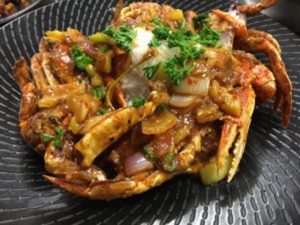
Address: 41 Mahoneys Road, Forest Hill VIC 3131, Australia
Opening Hours: 9am-9pm (Monday-Thursday, Sunday), 9am-10pm (Friday-Saturday)
New Sri Lankan neighbourhood restaurant and takeaway that also has a n adjacent grocery store and offers a bespoke catering service.
Things to Do
- Victor Melder Sri Lanka Library
Address: N/A
Opening Hours: N/A
Started in 1968 by first-generation Sri Lankan immigrant Victor Melder, this is a one-of-a-kind library with a wealth of Sri Lankan texts, featuring a collection of 5000 books and 2000 magazines. An essential resource for academics and Sri Lankan Australians seeking information about their culture.
- Lankan Fest
Address: N/A
Opening Hours: N/A
A staple of the Sri Lankan community since its inception in 2014, Lankan Fest is a wide-reaching celebration of Sri Lankan history and culture, featuring a wealth of performances including those from musicians, dancers as well as cooking classes and talks.
- Independence Day
Address: N/A
Opening Hours: N/A
Due to the large size of Melbourne’s Sri Lankan community, the country’s independence day celebrations are regularly a sight to behold and an event that unites the entire community.
- Sinhalese New Year
Address: N/A
Opening Hours: N/A
Undoubtedly Sri Lanka’s most important religious and cultural festival, Sinhalese New Year is a major cultural event which brings together the city’s entire Sri Lankan community.
Vietnamese
The Vietnamese community of Australia is one of the country’s most significant immigrant populations, numbering at nearly 300,000. Furthermore, Australia is home to one of the largest Vietnamese diaspora populations in the world, due in part to its relative proximity. The population is overwhelmingly based in New South Wales (64,000) and Victoria (59,000). Melbourne is subsequently home to a significant Vietnamese population, which is mainly based in the suburbs of Richmond and Footscray.
History
The Vietnamese community of Melbourne, and Australia generally, is a fairly new one. Prior to the outbreak of the Vietnam War, Vietnamese emigration outside of Asia and France (with whom Vietnam had historical colonial ties) was uncommon. Indeed, prior to the Vietnam War, there were virtually no Vietnamese residents in the country whatsoever. The war itself saw a small number of Vietnamese settle in the country due to significant population displacement and cultural conflict between the Communist North Vietnam and the Capitalist South Vietnam. Prior to 1975, there were 2,000 recorded Vietnamese residents of Australia, 382 of which lived in Victoria.
The end of the Vietnam War in 1975 marked a significant turning point in Vietnamese immigration to Australia and throughout the world. The reunification of North and South Vietnam under Communist rule caused considerable numbers of people to flee overseas. Australia became a major immigration destination. In addition to wives and children of American servicemen, refugees arrived en masse after spending time in resettlement camps. The first refugee boat arrived in 1976, with 53 additional boats arriving within a three year period.
By the beginning of the 1980’s, the Vietnamese population in Victoria alone exceeded 12,000, a considerable increase since the pre-war number. Immigration increased over the following years as the Australian government agreed upon a migration program, with designs on reunifying separated families. Over the following years, the vast majority of new Vietnamese immigrants were female. This caused a Vietnamese population boom during the 1980’s, doubling to well over 20,000.
The population gradually grew over the following decades, with Vietnam-war migrants eventually significantly outnumbering the number of refugees. The Vietnamese community in Melbourne in particular has become one of the most significant in the country, encompassing a wide range of areas. The Vietnamese population, initially mainly comprised of labourers, now work in a number of different fields, with the majority being small-business owners. Vietnamese restaurants and businesses are found throughout the city and the cuisine has become particularly popular. Geographically, the population are dispersed throughout the city, with Richmond and Springvale being major hubs.
Top Five Restaurants
- Rice Paper Scissors
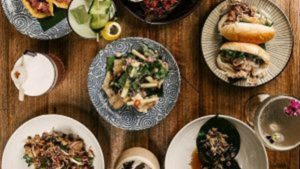
Address: 19 Liverpool Street, Melbourne VIC 3000, Australia
Opening Hours: 12pm-3pm, 5.30pm-11pm (Monday-Thursday), 12pm-11pn (Friday-Sunday(
Popular Vietnamese fusion restaurant specialising in sharing plates against a rustic, modern decor.
- Uncle
Address: 188 Carlisle Street, St. Kilda VIC 3182, Australia
Opening Hours: 5pm-10pm (Tuesday-Thursday), 12pm-11pm (Friday-Saturday)
Trendy Vietnamese bar and restaurant with a rooftop seating area, modern atmosphere and cocktails.
- Glenda Pho Cafe
Address: 191 Bay Street, Port Melbourne VIC 3207, Australia
Opening Hours: 11am-10pm (Monday-Saturday), 5pm-10pm (Sunday)
Cheap and cheerful Vietnamese restaurant specialising in classic staples such as Pho.
- Hem 27
Address: Shop 27/320-380 Epsom Road, Flemington VIC 3031, Australia
Opening Hours: 11am-10pm (Tuesday-Saturday), 11am-9pm (Sunday)
One of the best places for Vietnamese street food in the city. Both authentic and modern.
- Kin
Address: 1/233 Chapel Street, Prahran VIC 3181, Australia
Opening Hours: 11am-10pm (Monday-Thursday, Sunday), 11am-11pm (Friday-Saturday)
A classic neighbourhood Vietnamese restaurant with vegetarian and gluten free options.
Malaysia
Malaysian Australians are a major immigrant group in Australia, numbering nearly 139,000. Melbourne is home to the largest Malaysian population in the country, exceeding 29,000. The Malaysian community of Melbourne is one of the largest Asian diasporas in the city and an important part of its multicultural identity.
History
Malaysian immigration to Australia dates back to the early-19th Century. The country’s colonial ties to Britain resulted in a small number of Malaysian labourers being relocated to Australia to offer their unique skill sets to the new territory. Most notably, Malays were recruited as pearl divers throughout the country, most notably in the Northern Territory and Western Australia. There were also a large number of Malays working in sugar cane fields amongst other areas. There was a high demand for Malay workers throughout the country due to their unique areas of expertise. However, much like other Asian populations, Asian immigration was brought to a virtual standstill at the turn of the 20th Century as the Immigration Restriction Act (Better known as the ‘White Australia’ Policy) was implemented in 1901, preventing further significant growth.
Malaysian immigration to Victoria and elsewhere in Australia remained stagnant until the Second World War, which caused significant population displacement in the region. Large numbers of mixed-race European Malays relocated to Australia during this period. The aftermath of the Second World War, which coincided with the beginning of the progressive relaxation of immigration restrictions. The Colombo Plan was implemented, which allowed Malaysian students to take up temporary residency in the country. 20 years after the Second World War, nearly 2,5000 Victorians were born in Malaysian.
The dissolution of the Immigration Restriction Act in 1973 saw a massive increase in Malaysian settlement in Australia. With the foundations laid by the Colombo Plan, the number of Malaysian students significantly increased, with Melbourne a popular destination due to the wealth of educational options. Furthermore, a large number of ethnic Chinese Malays moved to Australia.
Since the early 1980’s, the Malaysian population of Victoria has gradually increased. The majority of recent immigrants have arrived in the country through the Family Reunification Scheme or as skilled workers. In modern times, the population numbers at around 40,000. The majority live in inner-city Melbourne or in suburbs such as Glen Waverley and Doncaster. Interestingly,
despite Malaysian being a predominantly Muslim country, this does not apply to the Malaysian Australian population. Over 40% are Christian while 27% are Buddhist.
Top Five Restaurants
- Roti Road
Address: 189/193 Barkly Street, Footscary VIC 3011, Australia
Opening Hours: 11am-3pm, 5pm-9.30pm (Monday-Wednesday), 11am-9.30pm (Thursday, Sunday), 11am-10pm (Friday-Saturday)
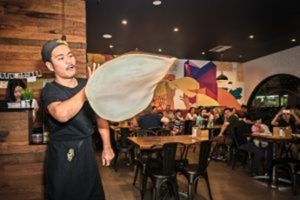
Modern and popular Malaysian restaurant specialising in classic dishes.
- Mamak
Address: 366 Lonsdale Street, Melbourne VIC 3000, Australia
Opening Hours: 11.30am-2.30pm, 5.30pm-9.30pm (Monday-Thursday, Sunday), 11.30am-2.30pm, 5.30pm-10.30pm (Friday-Saturday)
Popular and stripped-back BYOB Malaysian restaurant specialising in traditional dishes.
- Aunty Franklee
Address: 205 Russell Street, Melbourne VIC 3000, Australia
Opening Hours: 12pm-3.30pm, 4.30pm-10.30pm (Monday-Wednesday), 12pm-11pm (Thursday-Saturday), 12pm-10.30pm (Sunday)
Popular CBD Malaysian restaurant specialising in Hokkien delicacies.
- Laksa King
Address: 6-16 Pin Oak Crescent, Fleington VIC 3031, Australia
Opening Hours: 11.30am-3pm, 5pm-10pm (Monday-Thursday, Sunday), 11.30am-3pm, 5pm-10.30pm (Friday-Saturday)
Street food spot specialising in Laksa.
- Ayam Chef
Address: 67-69 Coventry Street, Southbank VIC 3006, Australia
Opening Hours: 11.30am-2.45pm, 5pm-9.30pm (Monday-Thursday, Sunday), 11.30am-2.45pm, 5pm-10.30pm (Friday), 5pm-10.30pm (Saturday)
Low-key neighbourhood restaurant with an extensive menu serving up top-notch variants on classic Malaysian dishes.

